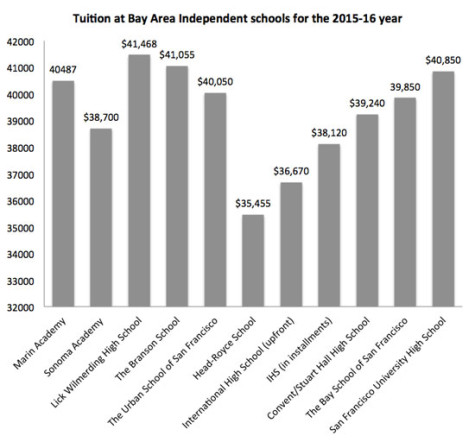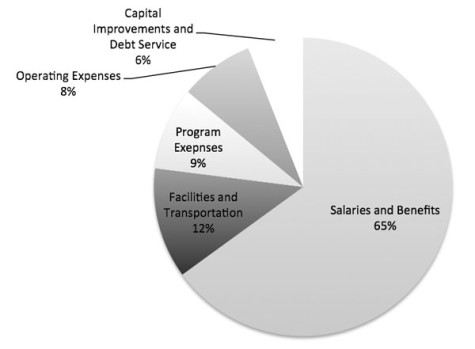Urban’s tuition to increase to $40,000 for the 2015-16 year
$40,000 can buy a wide variety of things. It can buy a new car, a year’s tuition, room, and board at any University of California school, or it can buy next year’s tuition at the Urban School of San Francisco.
Urban’s tuition will be increasing over five percent, from $38,100 to $40,050, for the 2015-2016 school year. The average tuition increase has been 4.2 percent per year over the last five years.

On his views of tuition increase over four years at Urban, Mason Phillips (‘15) said, “Compared to the 32 (thousand a year) when I entered, it’s a huge increase.” Noah Melrod (‘15) commented that “psychologically, (40 thousand is) a big number.” However, Maia Bruno (‘16) said that “if people can pay 38,000, most people won’t be affected” by the increase.
Diane Walters, Urban’s Chief Financial Officer, said that this year, the primary drivers of tuition increase were salaries and benefits for the faculty and staff. She said, “We like to give everyone an increase each year, to keep up with the cost of living.” New programs, such as new classes and sports teams, also contribute to this increase.
Phillips said, “I’m surprised that most of the increases aren’t going to the new building.” The new building is being primarily funded through donations and a loan from a bank.
Urban’s annual expenses for the 2015-16 year total roughly $13.7 million dollars. 89-90 percent of this is funded by student tuition, the rest comes from donations to the school. The breakdown is shown in the graph below.

The financial aid budget for the 2015-16 school year is $2.95 million. A portion of this comes from 19.5 percent of the tuition revenue. However, for the 28 percent of students who received some form of financial aid during the 2014-15 school year, this tuition increase can mean an increase in the percent of family contribution.
Walters said, “Every year we ask families to resubmit all their records on their tax returns, everything, and we look at each family again, as if they are a new family, and if everything has stayed the same, then they get about the same award.”
However she added that, “the award is the same not necessarily in dollars but in percentage. So if someone has been getting 50 percent (financial assistance) then they will continue to get 50 percent, if their financial situation is about the same. So if tuition goes up, and if their percentage stays the same, then (family contribution) grows — it’s 50 percent of the new tuition.”
Other Bay Area high schools are in the same range as Urban in terms of tuition, although policies around financial aid or payment plans vary between schools.
At The Branson School, financial aid for tuition doesn’t carry over to the cost of other school activities, but it does at schools like Urban and Lick-Wilmerding. Drew School offers a “Year of Entry Set” tuition plan where the tuition from the year a student enrolls is the fixed tuition each year until graduation. International High School has two tuition options: $38,120 if you pay in 10 monthly installments, or $36,670 if you pay upfront, a $1,450 difference.
At many schools, there are yearly mandatory fees to cover things* not included in tuition. At The Bay School of San Francisco, there is a mandatory fee of $2,600 for the 2015-16 year to cover the cost of books, the laptop, food service, required trips, and more. Urban has a mandatory laptop fee of $620. However, Lick’s tuition includes books, lunch, and course materials.
End note: Contrary to Urban myth, the pizza budget is not equivalent to a year’s tuition – it was $10,500 for the 2013-14 year, and $8,500 for the 2012-13 year.











